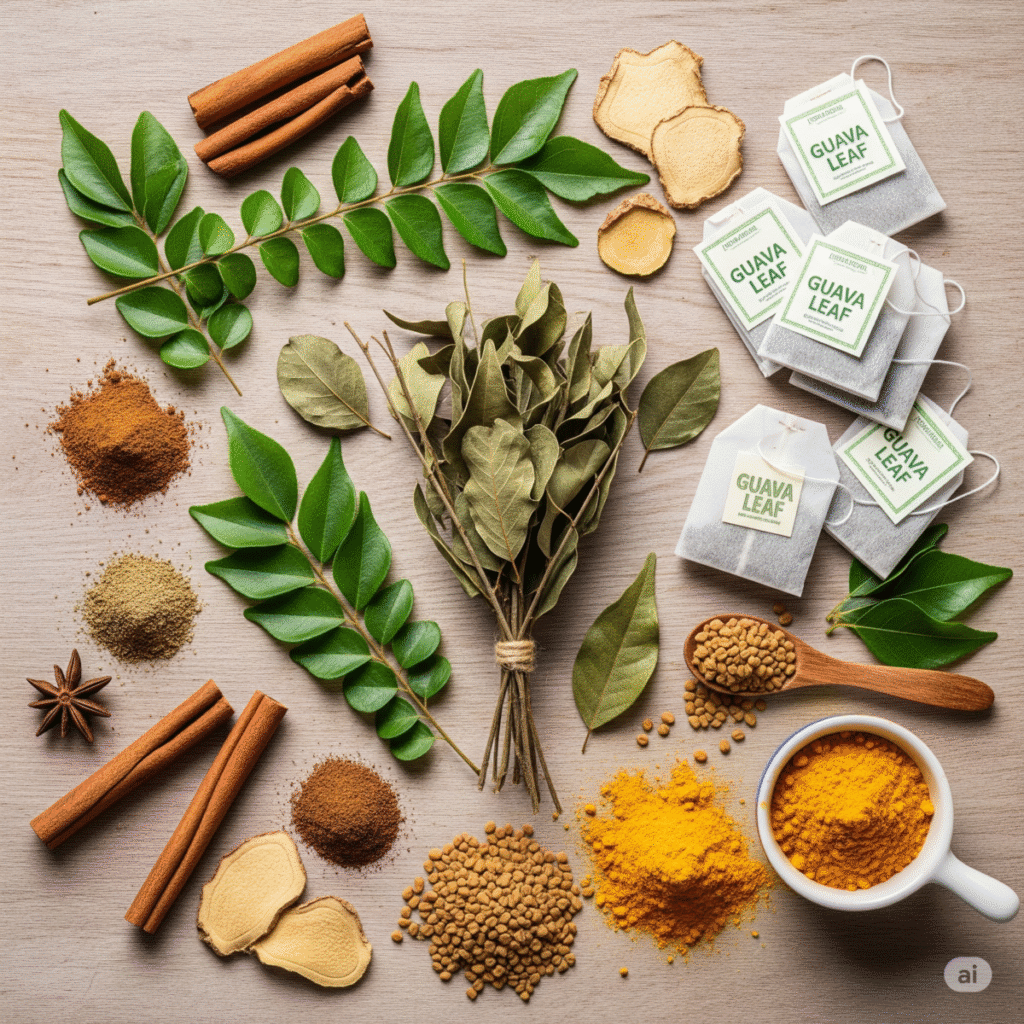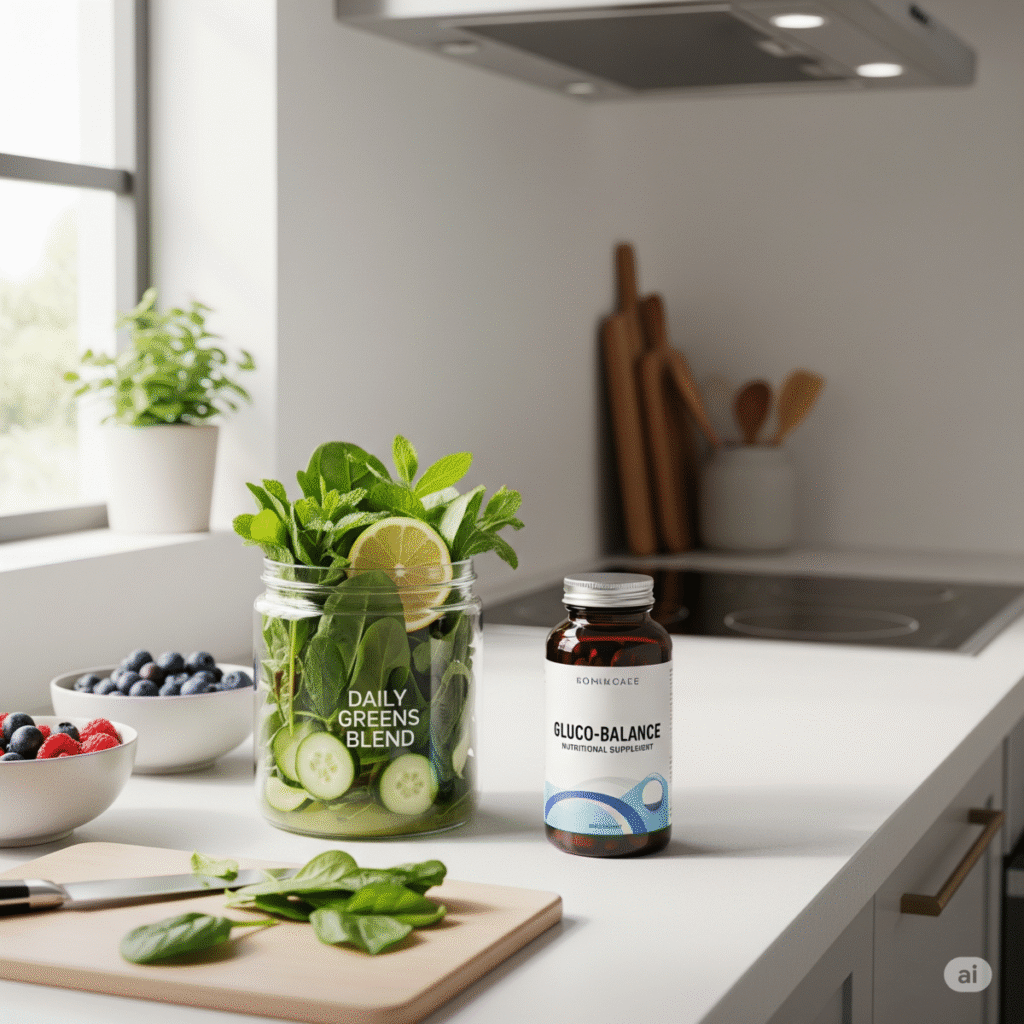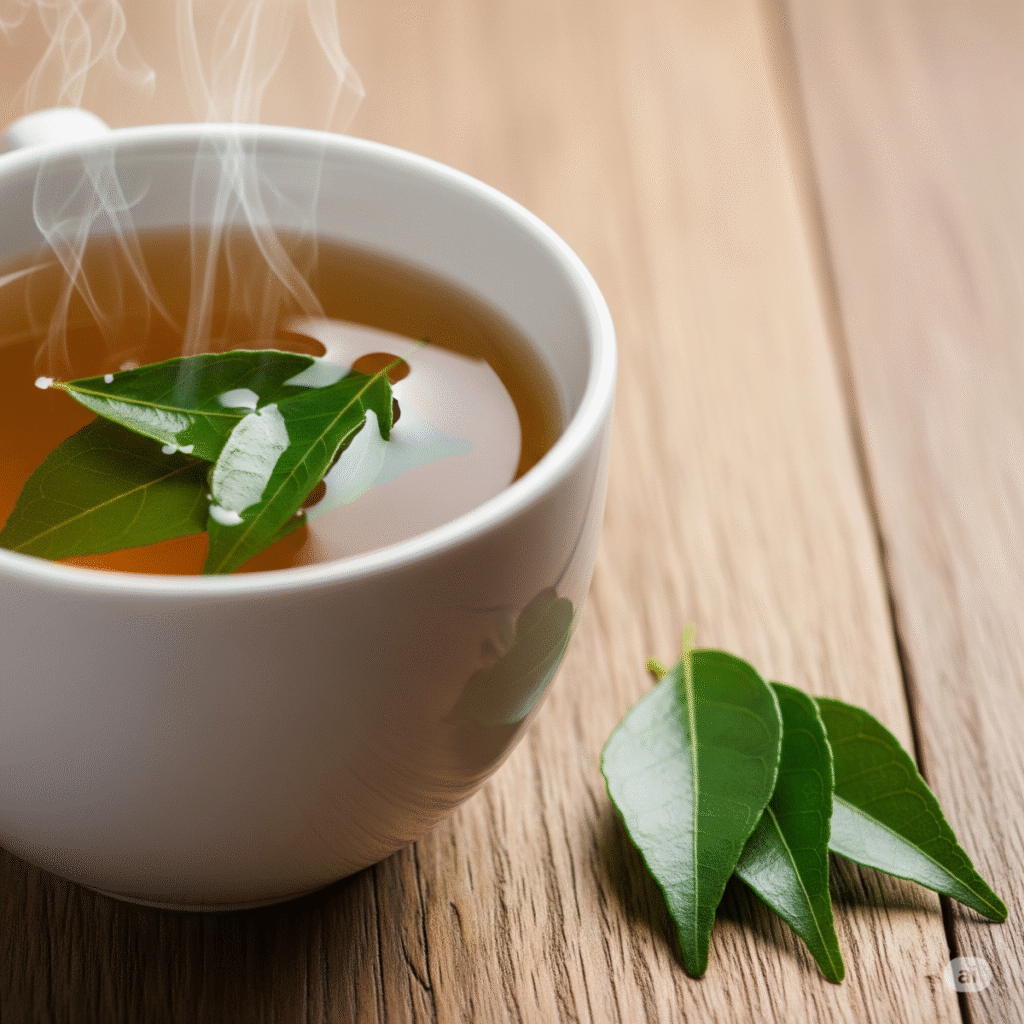Living with diabetes can feel overwhelming. Between monitoring blood sugar levels, counting carbohydrates, and managing medications, the daily routine often becomes a constant reminder of your condition. If you’re one of the millions of Americans dealing with diabetes, you’re probably searching for ways to make this journey easier and more natural.
What if we told you that some of the most powerful natural remedies for diabetes have been growing right under our noses for centuries? Long before modern medicine, traditional healers across different cultures discovered that certain leaves possessed remarkable abilities to help regulate blood sugar levels. These weren’t just folk tales – they were based on real, observable results that communities passed down through generations.
For more in-depth information on the scientific studies mentioned in this article, you can visit the National Center for Biotechnology Information (NCBI) website. This resource provides access to a vast database of biomedical literature, including peer-reviewed studies on the efficacy of natural compounds for blood sugar control. Visit NCBI for scientific studies on natural remedies for diabetes
Today, modern scientific research is catching up with ancient wisdom. Studies are now confirming what traditional medicine has known all along: specific leaves for diabetes control contain powerful compounds that can significantly support blood sugar management. These natural alternatives aren’t meant to replace your prescribed medications, but they can serve as valuable allies in your diabetes management toolkit.
In this article, we’ll explore three remarkable leaves that have shown tremendous promise in helping people manage their blood sugar levels naturally. From the insulin plant with its glucose-regulating properties to curry leaves that support pancreatic health, each of these botanical powerhouses offers unique benefits. The third one might surprise you – it’s a common kitchen plant you might already have in your home, and its leaves are proving to be incredibly effective for diabetes management.
Understanding Diabetes: The Role of Natural Remedies
What is diabetes? Simply put, diabetes is a metabolic disorder where your body either doesn’t produce enough insulin (Type 1) or can’t use insulin effectively (Type 2). Think of insulin as a key that unlocks your cells, allowing glucose (sugar) from your bloodstream to enter and provide energy. When this system breaks down, glucose accumulates in your blood instead of nourishing your cells.
Type 1 diabetes typically develops in childhood or young adulthood when the immune system mistakenly attacks insulin-producing cells in the pancreas. People with Type 1 diabetes require insulin injections for life. Type 2 diabetes, which accounts for about 90-95% of all diabetes cases, usually develops in adulthood and is strongly linked to lifestyle factors like diet, weight, and physical activity.
Why is high blood sugar so dangerous? When glucose levels remain elevated over time, it’s like having sugar syrup flowing through your blood vessels instead of normal blood. This sticky, thick consistency damages blood vessels throughout your body, leading to serious complications. Your eyes, kidneys, nerves, and cardiovascular system all suffer from this constant assault.
The role of insulin extends beyond just moving glucose into cells. It also signals your liver to stop producing glucose and helps convert excess glucose into fat for storage. When insulin resistance develops, your pancreas works overtime trying to produce more insulin, eventually becoming exhausted.
This is where diet and lifestyle become absolutely critical in managing diabetes. While medications can help control symptoms, addressing the root causes through nutrition, exercise, and stress management often produces more sustainable results. Learning how to lower blood sugar naturally doesn’t mean abandoning medical treatment – it means creating a comprehensive approach that supports your body’s natural healing mechanisms while working alongside conventional therapies.

Leaves for Diabetes: How They Work as Natural Remedies
The power of medicinal leaves lies in their complex nutritional profiles. Unlike isolated pharmaceutical compounds, leaves contain hundreds of bioactive substances that work synergistically to support health. These natural compounds include antioxidants that combat inflammation, fiber that slows glucose absorption, and specific phytonutrients that can enhance insulin sensitivity.
Certain leaves help regulate glucose levels through multiple mechanisms. Some contain compounds that mimic insulin’s action, while others slow down the enzymes that break down carbohydrates into simple sugars. Many medicinal leaves also contain chromium, magnesium, and other minerals that play crucial roles in glucose metabolism.
Antioxidants found in these leaves are particularly important for people with diabetes. High blood sugar creates oxidative stress, which accelerates the aging process and contributes to diabetic complications. The flavonoids, polyphenols, and other antioxidants in medicinal leaves help neutralize these harmful free radicals, protecting your cells from damage.
Scientific evidence supporting plant-based interventions for diabetes continues to grow. Numerous peer-reviewed studies have demonstrated that specific leaves can lower fasting glucose levels, improve insulin sensitivity, and reduce HbA1c levels – a key marker of long-term blood sugar control. These studies provide the scientific backing for what traditional medicine practitioners have observed for generations.
Insulin Plant Leaves: A Key Natural Remedy for Diabetes
The insulin plant, scientifically known as Costus igneus, earned its common name through centuries of use in traditional Ayurvedic medicine. Native to South and Central America, this remarkable plant has spiral-shaped leaves that contain powerful glucose-regulating compounds. Indigenous healers have long recognized its ability to help manage what we now understand as diabetes.
The nutritional compounds in insulin plant leaves are truly impressive. Corosolic acid, the primary active ingredient, has been extensively studied for its anti-diabetic properties. This triterpene acid works by enhancing glucose uptake in cells, similar to how insulin functions. The leaves also contain significant amounts of flavonoids, particularly quercetin and kaempferol, which provide additional blood sugar benefits and powerful antioxidant protection.
How it works: The insulin plant’s magic lies in its ability to improve insulin sensitivity at the cellular level. Corosolic acid activates glucose transporters, helping cells absorb glucose more efficiently from the bloodstream. Additionally, the plant’s compounds help reduce glucose production in the liver while slowing the breakdown of starches into simple sugars during digestion. This dual action helps prevent the dangerous blood sugar spikes that can occur after meals.
Multiple scientific studies have validated the insulin plant’s effectiveness as one of the most promising natural remedies for diabetes. A study published in the Journal of Ethnopharmacology found that participants who consumed insulin plant leaf extract experienced a 20-30% reduction in blood glucose levels within just two weeks. Another research study documented significant improvements in insulin sensitivity among Type 2 diabetics who incorporated the leaves into their daily routine.
While exploring natural remedies, it’s essential to understand the importance of diet in managing diabetes. For evidence-based nutritional guidance and meal planning tips, consider visiting the American Diabetes Association’s official website. Their resources can help you build a comprehensive and effective strategy for blood sugar control. Visit the American Diabetes Association for diabetes diet and nutrition information
How to use insulin plant leaves varies based on availability and personal preference. The most traditional method involves chewing 1-2 fresh leaves on an empty stomach each morning. For tea infusion, steep 4-5 fresh leaves (or 1 teaspoon of dried leaves) in hot water for 10 minutes, then drink twice daily before meals. Powdered insulin plant leaves can be mixed into smoothies or sprinkled on food, with a recommended dosage of 1/2 teaspoon twice daily.
Precautions are important to consider when using insulin plant leaves. Start with smaller doses to assess your body’s response, and always monitor your blood sugar levels closely when beginning any new natural remedy. Some people may experience mild stomach upset initially. If you’re taking diabetes medications, consult your healthcare provider before adding insulin plant leaves to your routine, as they may enhance your medication’s effects and require dosage adjustments.
Curry Leaves: A Proven Natural Remedy for Diabetes
Curry leaves might be familiar to anyone who enjoys South Asian cuisine, but their medicinal properties extend far beyond adding flavor to dishes. Originally native to India and Sri Lanka, curry leaves are now cultivated worldwide and are increasingly available in health food stores and specialty markets across the United States. These aromatic leaves have been treasured in Ayurvedic medicine for their remarkable ability to support metabolic health.
The nutrients packed into curry leaves make them a nutritional powerhouse. They’re rich in iron, which is essential for proper oxygen transport and energy production – both crucial for people managing diabetes. The leaves contain substantial amounts of dietary fiber, which helps slow glucose absorption and promotes digestive health. Perhaps most importantly for diabetes management, curry leaves contain unique alkaloids like mahanimbine and koenimbine, which have demonstrated significant anti-diabetic properties. The leaves are also loaded with antioxidants, including beta-carotene, vitamin C, and various polyphenolic compounds.
When considering lifestyle changes to support your diabetes management, it’s important to look beyond just diet and exercise. Managing mental and emotional well-being is crucial, as chronic stress can significantly impact your blood sugar levels. For more information on how to reduce mental overstimulation and improve your overall focus, you might find our article on dopamine detox: science vs. myth to be a valuable resource in your journey toward a healthier lifestyle.
How it works: Curry leaves support diabetes management through several sophisticated mechanisms. The alkaloids in the leaves help slow down the activity of alpha-amylase and alpha-glucosidase, enzymes responsible for breaking down complex carbohydrates into simple sugars. By inhibiting these enzymes, curry leaves effectively reduce the speed at which glucose enters your bloodstream after meals. Additionally, research suggests that curry leaves may help regenerate pancreatic beta cells – the very cells responsible for producing insulin. This pancreatic support is particularly valuable for people with Type 2 diabetes, where beta cell function is often compromised.
Evidence from multiple studies confirms curry leaves’ effectiveness as one of the best leaves for diabetes control. A clinical trial published in the International Journal of Food Sciences and Nutrition found that participants who consumed curry leaf powder daily experienced significant reductions in both fasting glucose and post-meal blood sugar levels. Another study demonstrated that curry leaves could reduce HbA1c levels by up to 16% over three months of consistent use.
How to use curry leaves is both simple and versatile. For a refreshing curry leaf smoothie, blend 8-10 fresh leaves with cucumber, mint, and a small amount of lemon juice. Curry leaf tea can be prepared by boiling 15-20 fresh leaves in water for 5 minutes, then straining and drinking twice daily. Dried curry leaf powder can be sprinkled on salads, mixed into yogurt, or added to soups and stews. Fresh curry leaves can also be incorporated directly into meals – try sautéing them with vegetables or adding them to omelets.
Extra benefits of curry leaves extend beyond blood sugar control. Regular consumption has been linked to improved weight management, as the leaves may help boost metabolism and reduce fat accumulation. They also support healthy cholesterol levels by reducing LDL (bad) cholesterol while potentially increasing HDL (good) cholesterol. The iron content makes curry leaves particularly beneficial for people with diabetes who may be at higher risk for anemia.
For storage tips in US homes, fresh curry leaves can be stored in the refrigerator for up to two weeks when wrapped in paper towels and placed in a plastic bag. For longer storage, wash and thoroughly dry the leaves, then freeze them in ice cube trays with a little water – this preserves both their nutritional content and flavor for up to six months.
Guava Leaves: An Effective Natural Remedy for Diabetes
Guava leaves represent one of nature’s most accessible and effective best herbal remedies for type 2 diabetes. While guava fruit is widely recognized for its vitamin C content, the leaves of this tropical plant contain even more potent compounds for blood sugar management. Originally native to Central America and the Caribbean, guava trees now grow in many warm climates, and guava leaf tea has become increasingly available in health stores across the United States.
The key compounds in guava leaves create a powerful arsenal against high blood sugar. Quercetin, a flavonoid also found in onions and apples, helps improve insulin sensitivity and reduces inflammation throughout the body. Tannins, the compounds that give tea its astringent taste, work to inhibit glucose absorption in the intestines. The leaves also contain significant amounts of polyphenols, particularly gallic acid and catechin, which have demonstrated remarkable anti-diabetic properties in multiple research studies.
How it works: Guava leaves tackle diabetes from multiple angles simultaneously. The tannins and other compounds in the leaves inhibit the absorption of sugars in the small intestine, effectively reducing the amount of glucose that enters your bloodstream after meals. At the same time, the polyphenolic compounds help improve insulin function at the cellular level, making your cells more responsive to the insulin your body produces. Research has also shown that guava leaves may help protect pancreatic beta cells from oxidative damage, potentially preserving your body’s natural insulin production capacity.
Scientific evidence supporting guava leaves as one of the most effective best herbal remedies for type 2 diabetes continues to accumulate. A groundbreaking study published in Nutrition & Metabolism found that guava leaf tea reduced blood glucose levels by up to 25% in participants with Type 2 diabetes. Another clinical trial demonstrated that people who drank guava leaf tea regularly experienced significant improvements in insulin sensitivity within just 12 weeks. Japanese researchers have conducted extensive studies showing that guava leaf extract can effectively lower both fasting glucose levels and post-meal blood sugar spikes.
Managing chronic conditions like diabetes often requires a holistic approach that includes addressing your body’s stress response. The vagus nerve plays a key role in this by regulating the “rest-and-digest” part of your nervous system, which can help lower heart rate, reduce inflammation, and calm your body. For a deeper understanding of this connection and to learn about the benefits of vagus nerve stimulation, you can refer to our article on vagus nerve stimulation benefits.
How to use guava leaves is straightforward and convenient. For hot guava leaf tea, steep 1 tablespoon of dried guava leaves (or 6-8 fresh leaves) in one cup of boiling water for 10 minutes, then strain and drink 2-3 times daily, preferably before meals. Iced guava leaf tea makes a refreshing alternative – prepare the hot tea as directed, then chill and serve over ice with a slice of lemon. Powdered guava leaves can be mixed into smoothies, yogurt, or oatmeal, with a recommended dose of 1 teaspoon twice daily.
Other health benefits of guava leaves extend well beyond diabetes management. The antimicrobial properties help support digestive health and may reduce the risk of gastrointestinal infections. The high antioxidant content supports heart health by reducing inflammation and potentially lowering blood pressure. Some studies suggest that guava leaves may also help with weight management by boosting metabolism and reducing fat absorption.
Precautions should be observed when using guava leaves. While generally safe for most people, pregnant and breastfeeding women should avoid guava leaf supplements and tea without consulting their healthcare provider. Some individuals may experience mild digestive upset when first using guava leaves, so start with smaller amounts and gradually increase. As with all natural remedies, monitor your blood sugar levels closely and inform your doctor about your guava leaf use, especially if you’re taking diabetes medications.

How to Use These Leaves for Diabetes Control
Incorporating these miraculous leaves into your daily routine doesn’t require a complete lifestyle overhaul. Start your morning with a cup of insulin plant tea or chew 1-2 fresh insulin plant leaves on an empty stomach. Mid-morning, enjoy a curry leaf smoothie blended with spinach, cucumber, and a touch of ginger. For lunch, add fresh curry leaves to your salad or sauté them with vegetables.
Afternoon is perfect for iced guava leaf tea as a refreshing, blood sugar-friendly beverage. For dinner, incorporate curry leaf powder into your cooking or prepare a warm guava leaf tea to drink 30 minutes before your evening meal.
Combining leaves can maximize benefits – try mixing equal parts dried insulin plant, curry, and guava leaves to create a powerful diabetes-fighting tea blend. Store this mixture in an airtight container and use 1 teaspoon per cup of hot water.
Storage and shelf life tips ensure you get the most from your leaves. Fresh leaves should be used within 7-10 days when stored in the refrigerator. Dried leaves maintain potency for 6-12 months when stored in airtight containers away from light and moisture. Consider freezing fresh leaves in ice cube trays with water to preserve them for smoothies.
Consistency is crucial for these home remedies for high blood sugar. Set reminders on your phone, prepare teas in advance, and keep powdered leaves in convenient locations. Track your blood sugar levels to monitor improvements and adjust usage as needed.
Beyond Leaves: Lifestyle Tips for Managing Diabetes Naturally
While these miraculous leaves can significantly support your blood sugar management, they work best as part of a comprehensive lifestyle approach. Balanced diet and portion control remain fundamental – focus on whole foods, lean proteins, healthy fats, and complex carbohydrates while limiting processed foods and refined sugars.
Regular exercise and weight management amplify the benefits of herbal remedies. Even 30 minutes of daily walking can improve insulin sensitivity and help your body use glucose more effectively. Strength training twice weekly helps build muscle mass, which acts as a glucose storage depot.
Stress reduction techniques are often overlooked but crucial for diabetes management. Chronic stress elevates cortisol levels, which can raise blood sugar. Practice meditation, deep breathing exercises, or yoga to help manage stress levels naturally.
Sleep hygiene directly impacts blood sugar control. Aim for 7-9 hours of quality sleep nightly, maintain consistent sleep schedules, and create a relaxing bedtime routine. Poor sleep can increase insulin resistance and make blood sugar management more challenging.

Precautions and When to See a Doctor
These natural remedies are supportive therapies that complement, not replace, medical care. Always inform your healthcare provider about any herbal supplements or natural remedies you’re using, as they may interact with medications or affect dosage requirements.
Watch for possible allergic reactions when trying new leaves – start with small amounts and discontinue use if you experience rash, swelling, or difficulty breathing. Some people may experience digestive upset initially.
Monitor your blood sugar levels more frequently when incorporating new natural remedies, and be prepared to adjust your medication dosages under medical supervision. Schedule regular checkups with your healthcare provider to track your progress and ensure your overall diabetes management plan remains effective.
Conclusion & Key Takeaways
Nature has provided us with remarkable tools for managing diabetes, and these three miraculous leaves – insulin plant, curry leaves, and guava leaves – represent some of the most promising natural remedies for diabetes available today. Each offers unique mechanisms for supporting blood sugar control, from improving insulin sensitivity to slowing glucose absorption.
The insulin plant’s corosolic acid content makes it a powerful ally for enhancing glucose uptake, while curry leaves support both pancreatic health and enzyme regulation. Guava leaves provide comprehensive blood sugar support through their rich polyphenol content and glucose absorption inhibition.
Remember, these leaves work best when combined with healthy lifestyle choices including balanced nutrition, regular exercise, stress management, and adequate sleep. While they can significantly support your diabetes management journey, they should complement, not replace, your medical care.
Nature has solutions – you just need to use them wisely. Start slowly, monitor your progress, work with your healthcare provider, and embrace the power of these natural allies in your journey toward better blood sugar control. Your path to managing diabetes naturally begins with a single leaf, a single cup of tea, and a commitment to exploring the healing wisdom that nature provides.






Leave a Reply